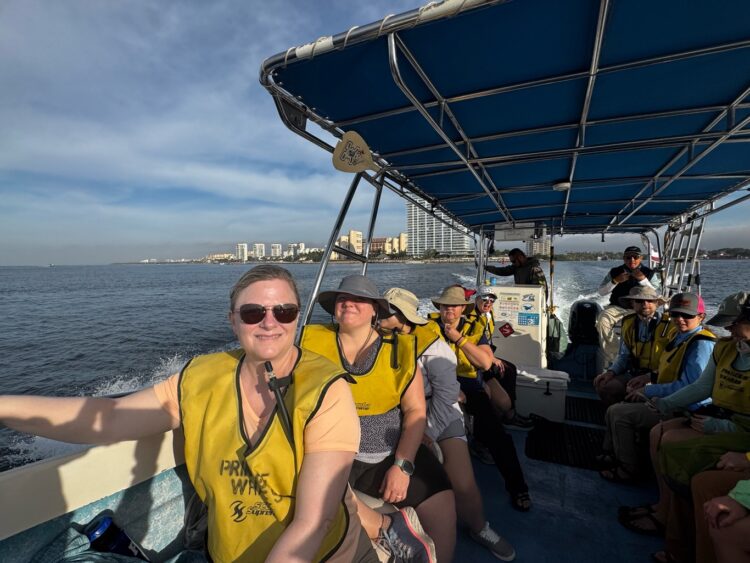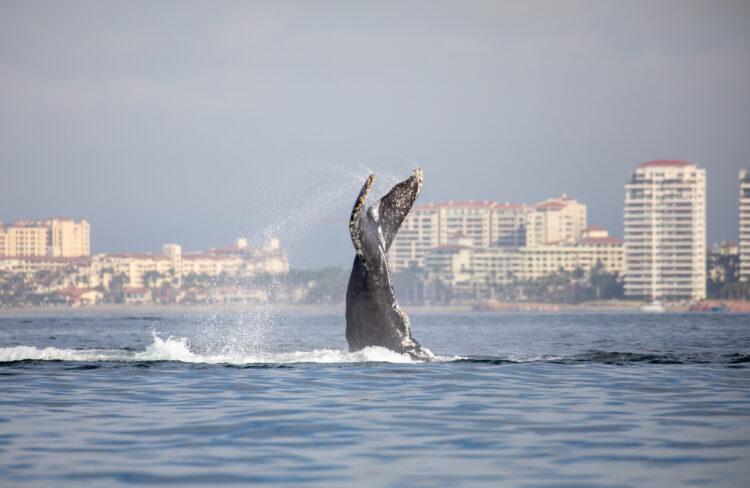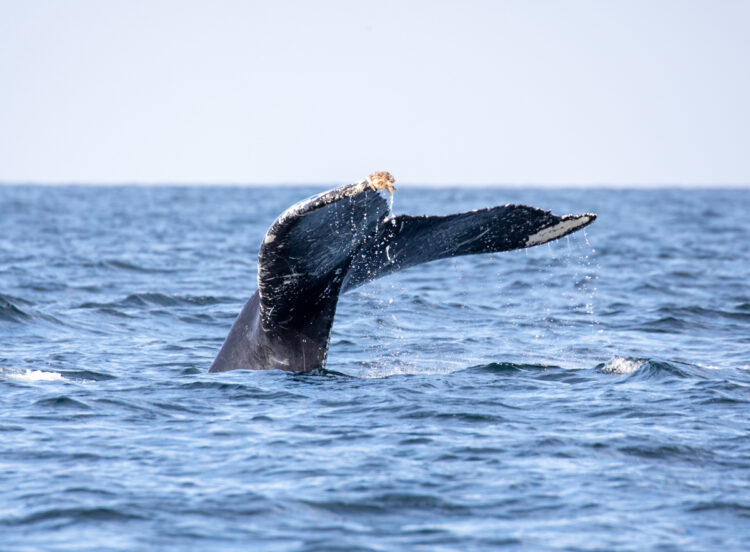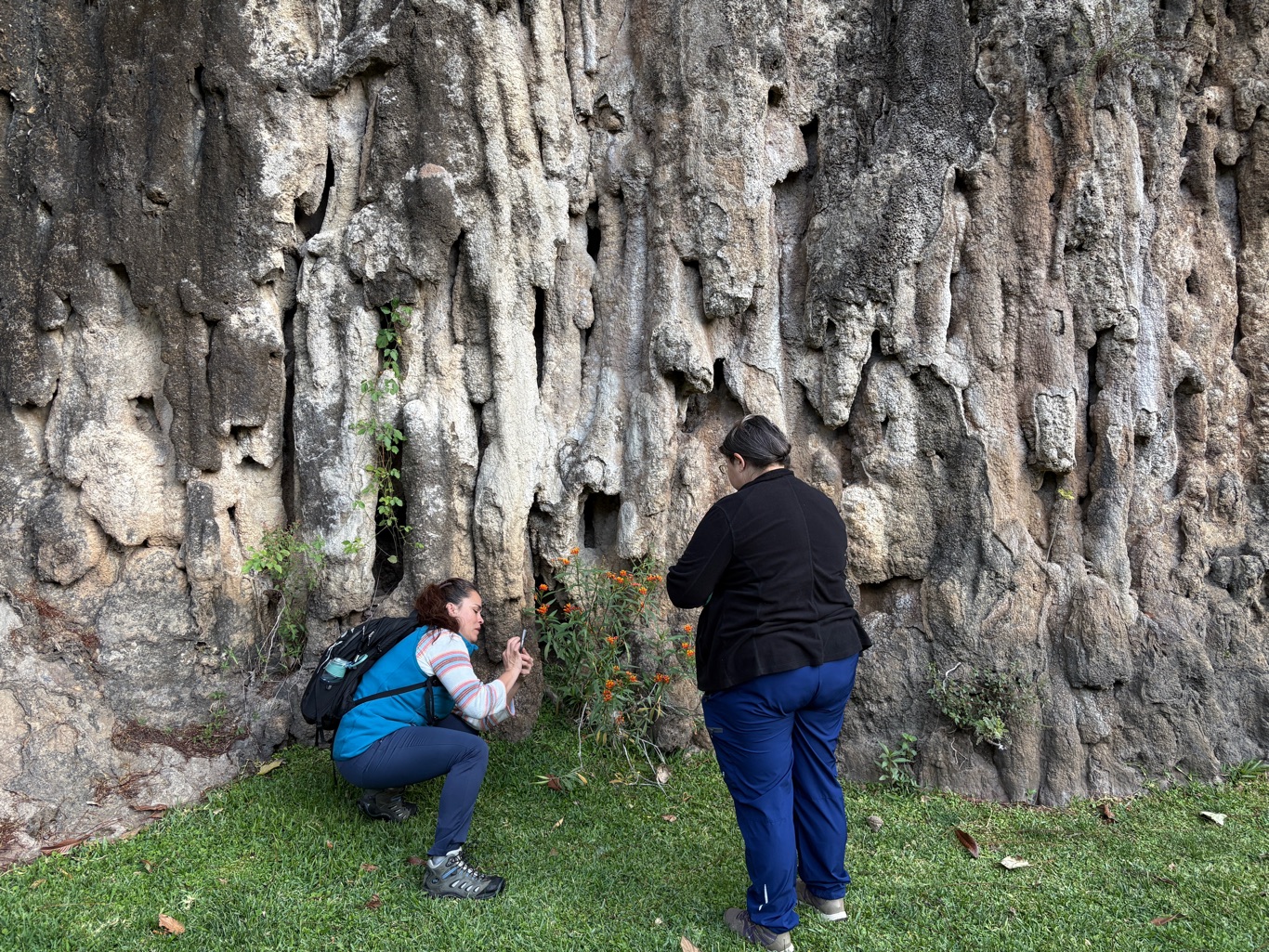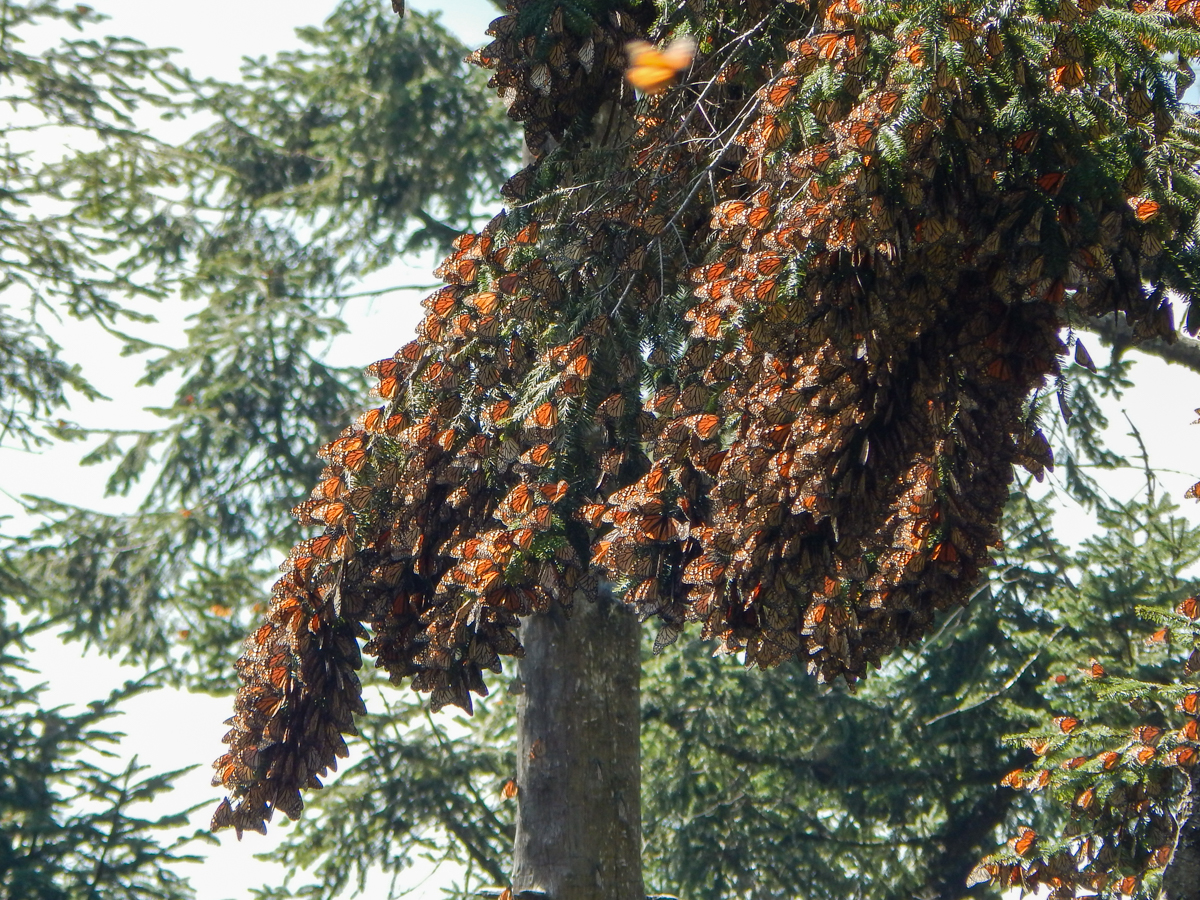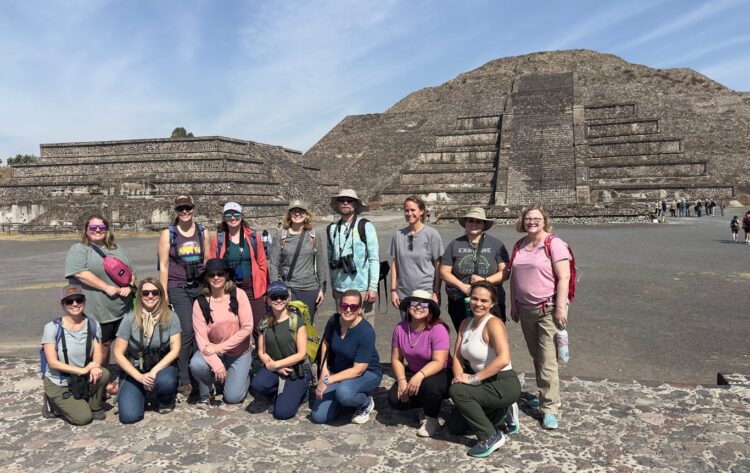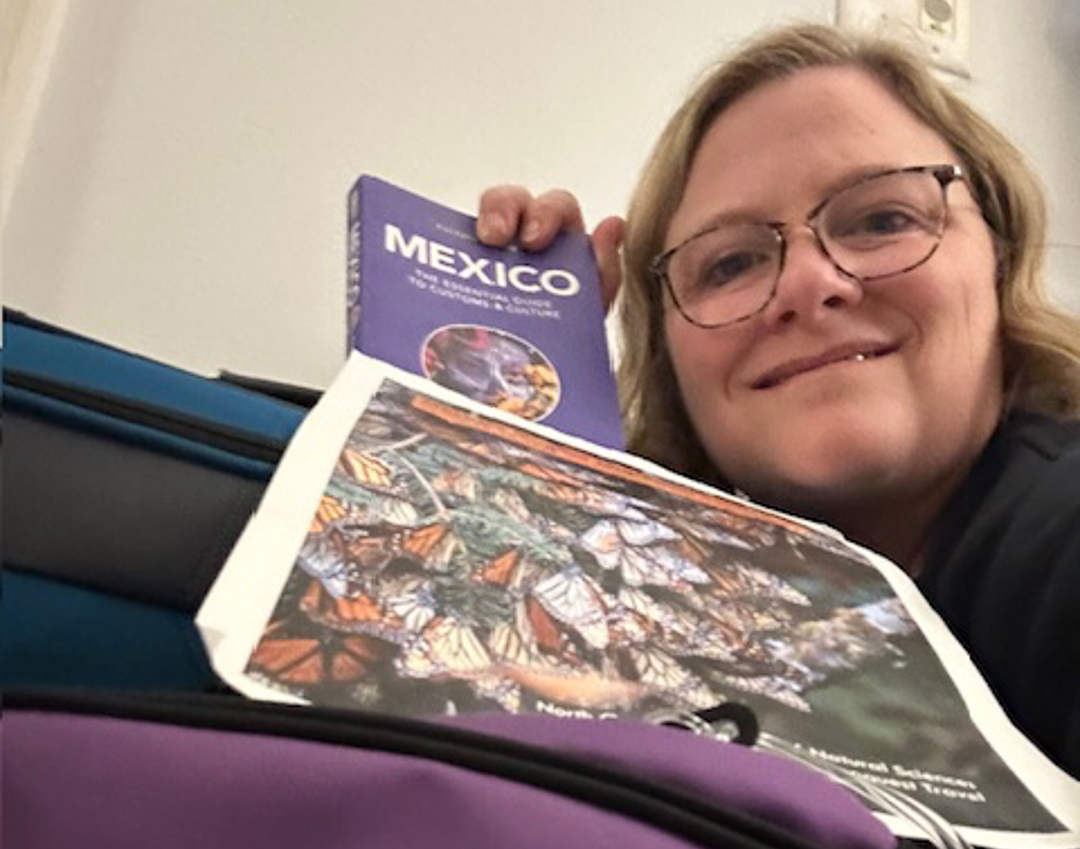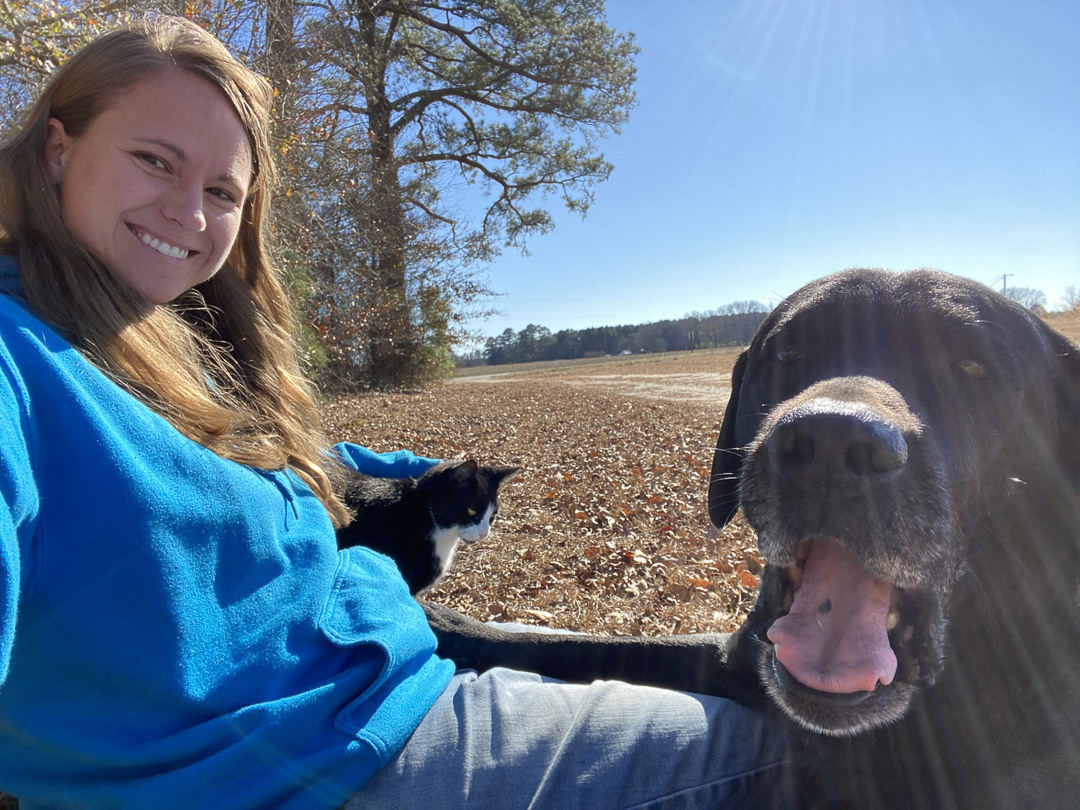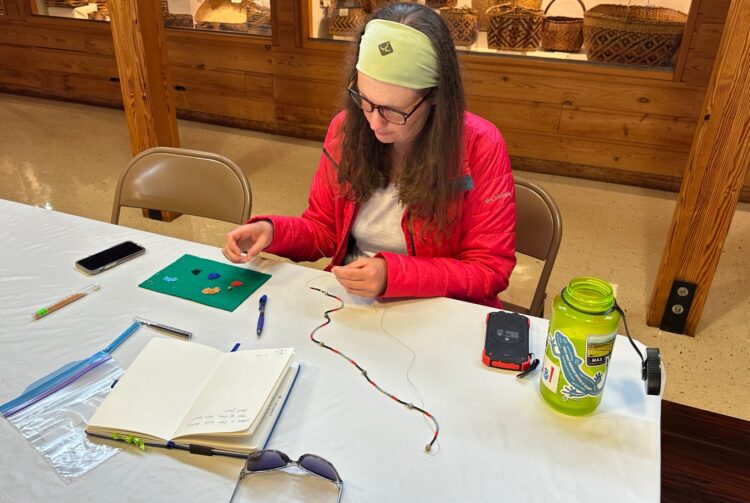“No Place Like Home”
January 22, 2025 - Comments Off on No Place Like Home
On our last full day in Mexico, we left the coast in Puerto Vallarta in the dark, traveling up twisting and turning roads similar to what you might find in our own mountains back in North Carolina. Our goal was to observe military macaws and visit a botanical garden. On the way, we made a pit stop at an open air roadside bakery where the workers baked a large variety of Mexican pastries in a wood fired oven that was attached to the side of a mountain. We all enjoyed the delectable pastries and washed them down with hot chocolate and coffee.
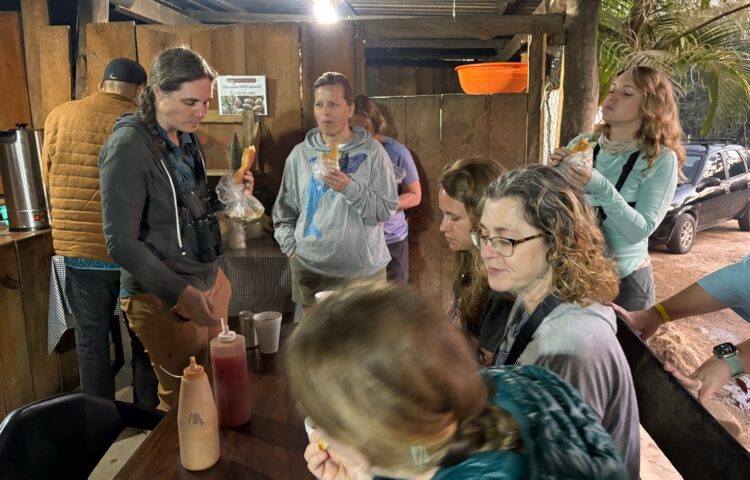
Arriving at the El Santuario de las Guacamayas (Military Macaw Sanctuary) we paused on the drive up the long winding dirt road to observe our first macaw in a distant tree and hear the first of many loud calls these birds make.
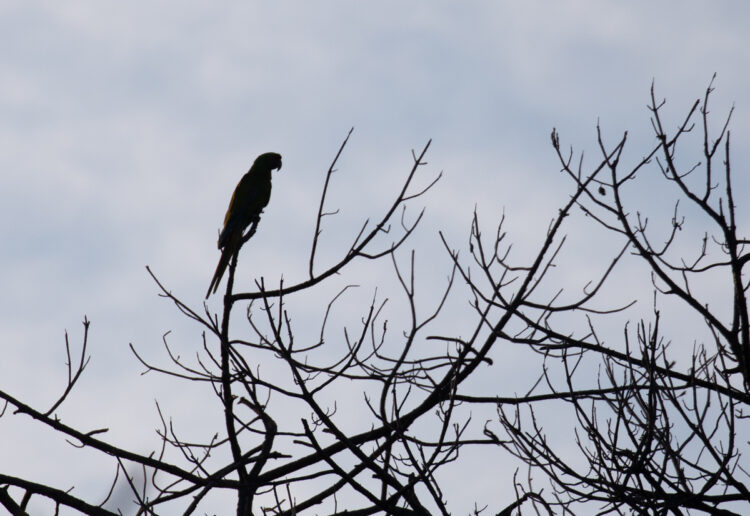

At the top of the road, we met a member of the family who donated the land to the conservation efforts of the military macaw who tends to the sanctuary daily. He told us all about the land, the animals that live there including jaguars and ocelots, and most importantly, the military macaws we came to see.
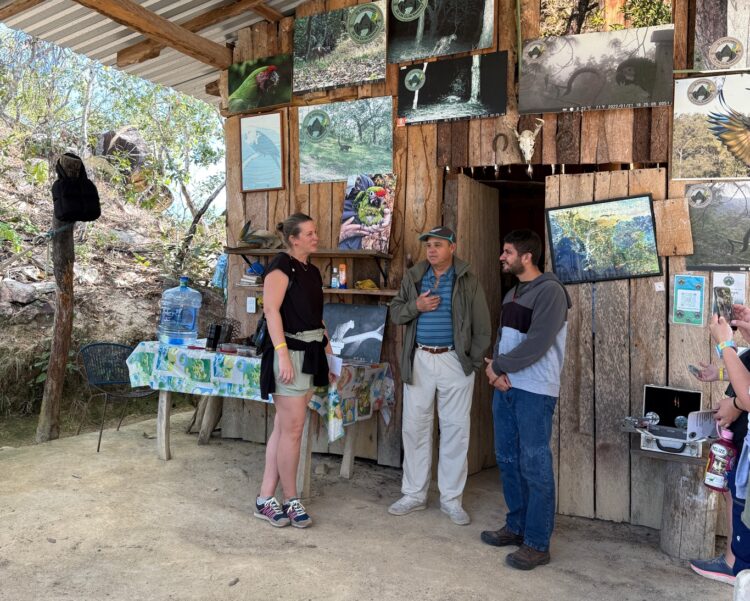
Our first stop in search of the macaws was down a trail thought the familiar looking oak and pine habitat were we found a huge lookout structure towering up though the trees at the top of the ridge. We could see the first of the macaw houses hanging in the trees. Military Macaws are a cavity nesting bird like our beloved eastern bluebird back in North Carolina. The macaw nesting boxes are about three feet tall and about 16 inches in diameter, much larger than the boxes we are used to seeing for our bluebirds.
It was early morning and the macaws were emerging from their houses and preening on the limbs of giant pine trees with long needles that resembled our longleaf pines in North Carolina. These large and very loud birds are primarily covered in bright green feathers but you can also see bright blue, yellow, and red field marks if you look closely with binoculars.

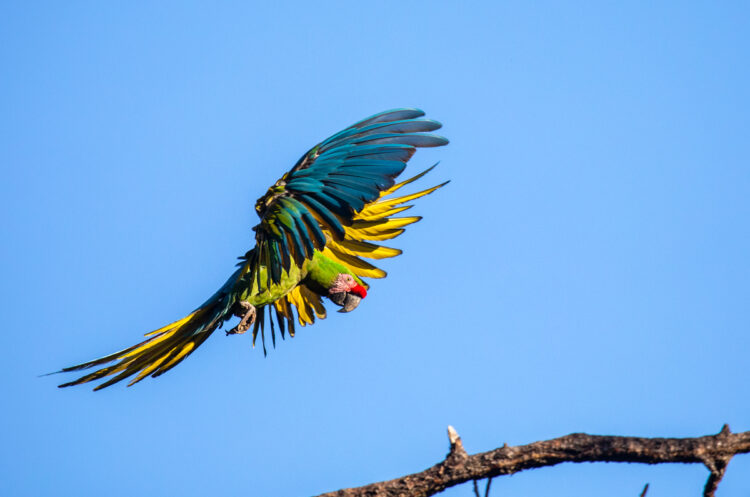
The military macaw was one of the most beautiful birds we have observed of the 129 species of birds we counted on this trip.
Macaws weren’t the only birds sighted on today’s outing. We also saw a variety of other birds in the sanctuary included parakeets, hummingbirds, warblers, and woodpeckers as we were were led by our guides though the forest trails. Michael, one of the guides, would make the calls of the ferruginous pygmy-owl and other birds to allow us a better view of the birds in the area, who would swarm towards the “predator.” He was so good at the calls that he would trick the Merlin app many of us use to identify bird calls into thinking it was a real bird!

We learned that the macaws regularly number around 70, but in the peak season, there can be upwards of about 110. Many were observed at different spots by all the members of our group today, a good sign for this birds that is in need of protection.
For the ones who dared get close, on the way out of the sanctuary, we were able to see a tarantula. We were told she has lived in a particular rock with a little triangle cave for 8 years!
Then, we traveled to the Vallarta Botanical Gardens. It is one of the top rated in North America, and we could quickly see why. We saw every plant you can imagine for the area and got a glimpse of even more birds that contributed to our large list, including the green jay and cinnamon hummingbird.


During our walk around the wild landscape of the garden we journeyed down to a boulder-filled river that if you were blindfolded and dropped you might think you were at Wilson Creek in the NC mountains.
Lunch was at the Hacienda de Oro on the property of the gardens. We had some AMAZING cuisine and enjoyed three special folk dances by Roberto, one of which was with a pair of machetes! He was then joined by one of our own, Mini, for his last dance. It was so fun to see them dance together and made both Roberto’s and Mini’s day.

When we neared the coast again we made a stop at a roadside lookout where we saw two huge rock islands with large flocks of pelicans,magnificent frigate birds, and blue footed bootees diving into the water for a meal and roosting on the islands. Jessie, another one of our fabulous guides spotted a manta ray in the water and we all enjoyed seeing another new species!

We are not so sure Dorothy from the Wizard of Oz really had it right when she said “there’s no place like home” with all the similarities to North Carolina we saw on this trip.
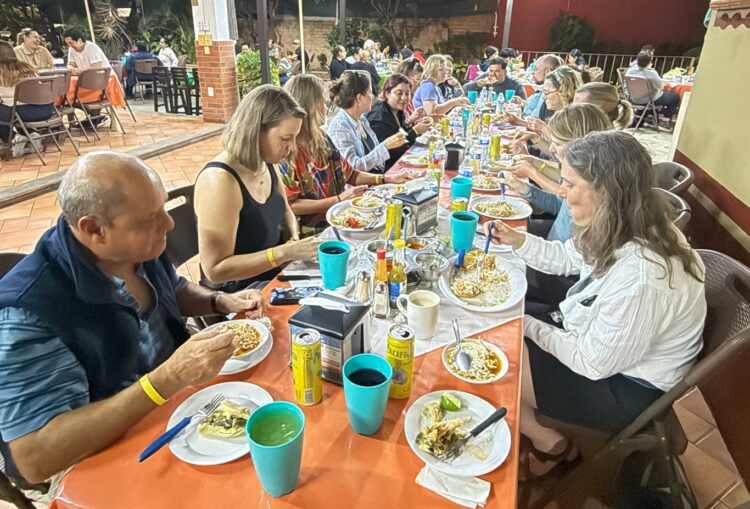
Tomorrow have one last meeting, pack up our belongings, and travel home. Stay tuned for one more blog entry as we say good-bye to each other and this wonderful experience we were so fortunate to have and head home back to our families and schools.

